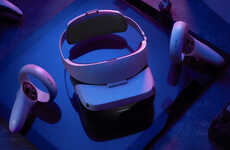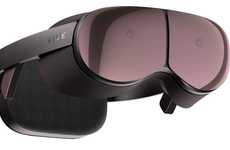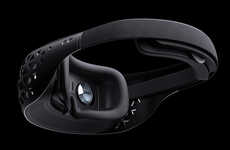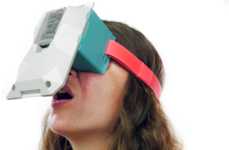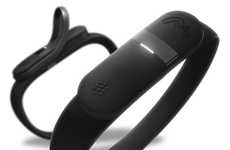
The Totem Headset Has Two On-Board Cameras and HDMI Compatibility
Rahul Kalvapalle — September 19, 2014 — Tech
References: kickstarter & gizmag
The Totem virtual reality headset is a device being developed by Canadian company Vrvana. This headset includes built-in cameras and a degree of external compatibility that could set it apart from the Oculus Rift and other virtual reality headsets.
The Totem is equipped with low-latency hardware-accelerated motion tracking, a 1080p OLED display and a 90-degree field of view. However, its two on-board cameras are its best feature. These 1080p cameras give the user the ability to switch from virtual reality back to the real world in no time via the touch of a button, which would make it more bearable to wear the headset for extended periods of time.
This virtual reality headset has HDMI compatibility which allows you to plug it into gaming consoles like the Xbox One and PS4 as well as smartphones.
The Totem is equipped with low-latency hardware-accelerated motion tracking, a 1080p OLED display and a 90-degree field of view. However, its two on-board cameras are its best feature. These 1080p cameras give the user the ability to switch from virtual reality back to the real world in no time via the touch of a button, which would make it more bearable to wear the headset for extended periods of time.
This virtual reality headset has HDMI compatibility which allows you to plug it into gaming consoles like the Xbox One and PS4 as well as smartphones.
Trend Themes
1. Built-in Cameras in Virtual Reality Headsets - Virtual reality headset manufacturers can explore the addition of built-in cameras for easier switching between the virtual and real world.
2. External Compatibility for Virtual Reality Headsets - Virtual reality headset manufacturers can explore the addition of external compatibility features such as HDMI to reach broader audiences.
3. Low-latency Hardware-accelerated Motion Tracking in Virtual Reality Headsets - Virtual reality headset manufacturers can explore the addition of low-latency hardware-accelerated motion tracking to their devices for more immersive experiences.
Industry Implications
1. Gaming Industry - The gaming industry can benefit from virtual reality headsets such as the Totem with HDMI compatibility and built-in cameras for a more interactive gaming experience.
2. Film Industry - The film industry can explore the use of virtual reality headsets with low-latency hardware-accelerated motion tracking for more immersive filming and viewing experiences.
3. Education Industry - The education industry can benefit from virtual reality headsets with built-in cameras for immersive field trips and external compatibility for seamless integration with educational software.
5.3
Score
Popularity
Activity
Freshness





